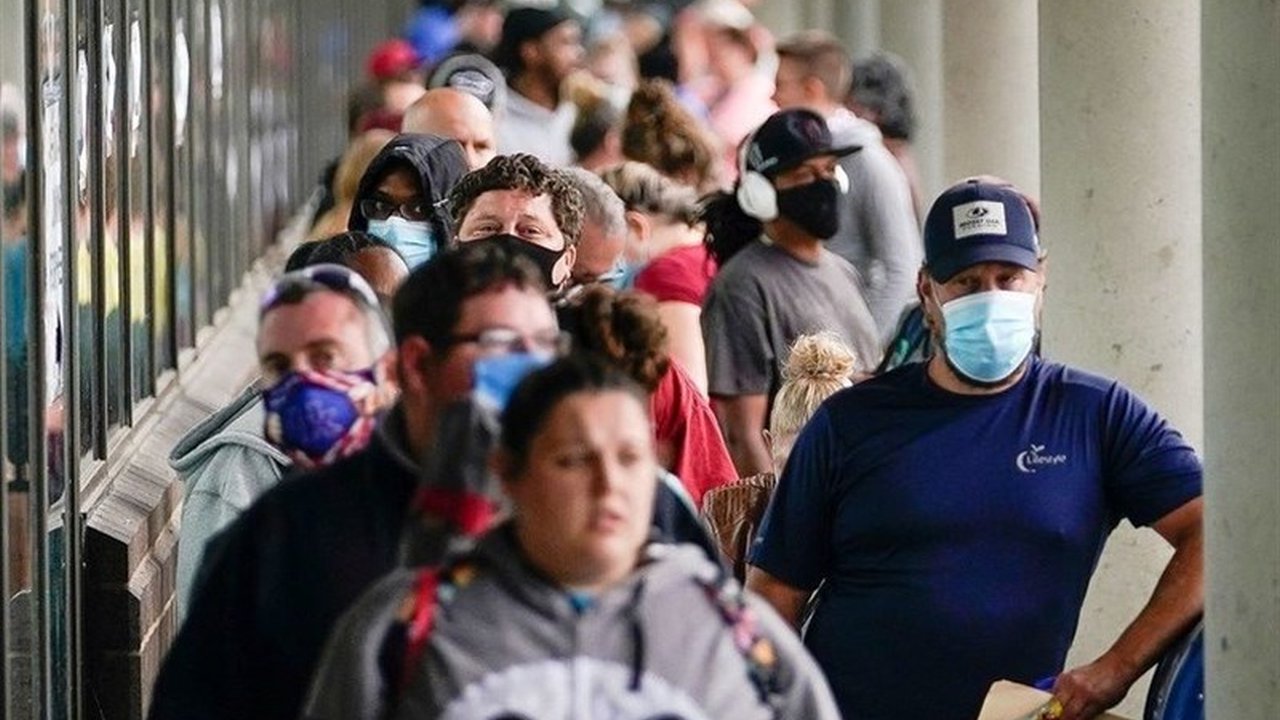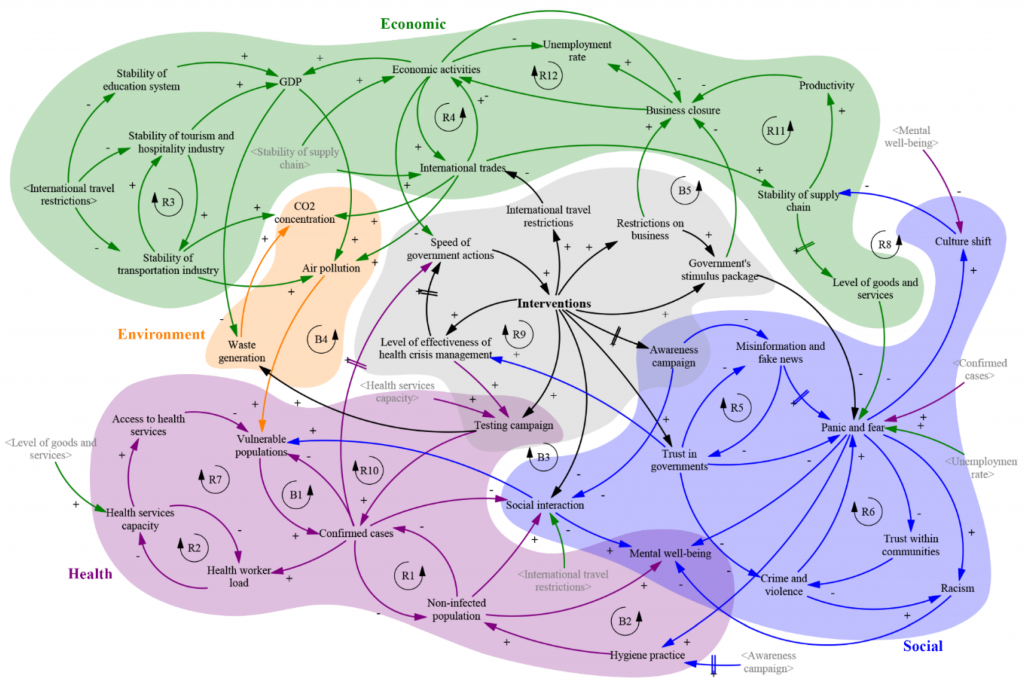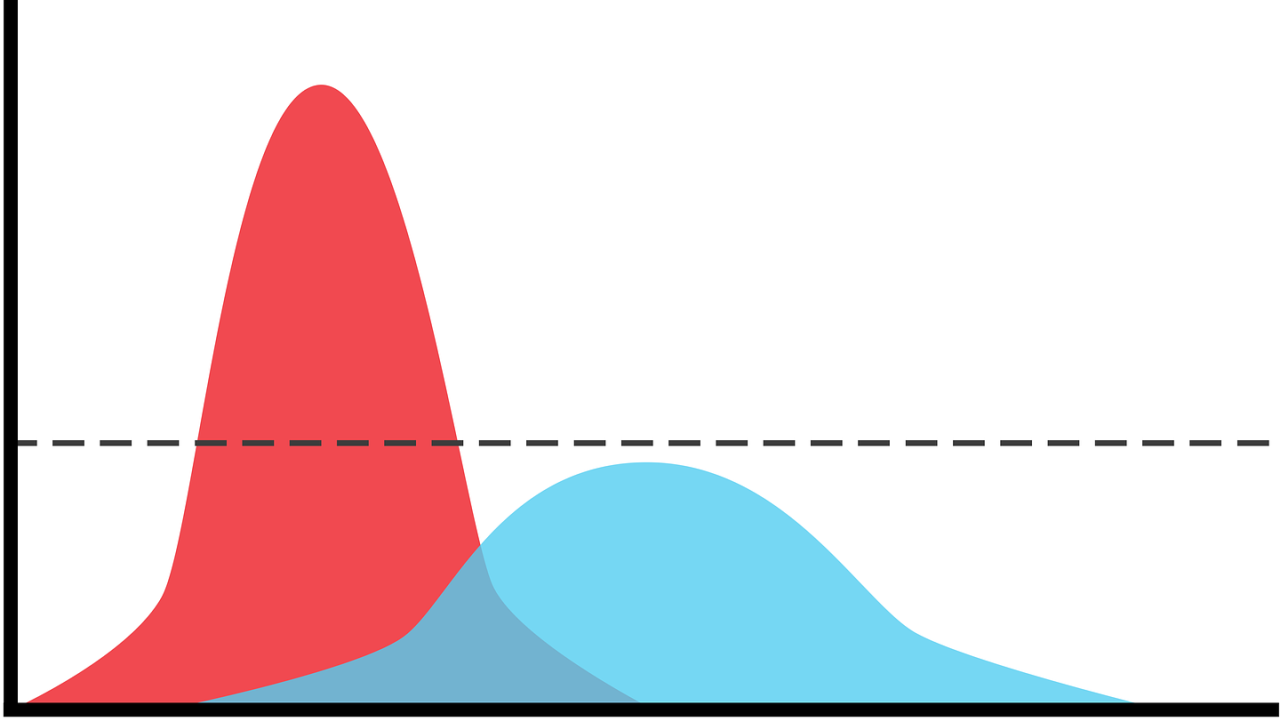
Identifying the “right” interventions in the wicked complexity of the COVID-19 pandemic
As I’ve previously discussed in RealKM Magazine, successfully intervening in the complex system that underlies the COVID-19 crisis poses significant challenges. Intervening in one part of the system can fail to effectively address a problem because of the influences of ignored or neglected parts of the system. Further, intervening in one part of the system without considering the impacts that such actions might have on other parts of the system can have unintended consequences.
As a new paper1 in the journal Systems alerts, COVID-19 is a wicked problem for policy makers internationally as the complexity of the pandemic transcends health, environment, social, and economic boundaries.
Preliminary causal loop diagram
To assist policy makers to design the most effective strategies and reduce the unintended consequences, the paper authors have developed a preliminary causal loop diagram of the COVID-19 pandemic (Figure 1).
The authors advise that they have not sought to provide a full explanation of the issue in their paper, but rather provide an example of how visualising the complexity of a system can help identify leverage points and the key important trade-offs that exist in the system. There remains a need to develop a system dynamics model that will be able to quantify the COVID-19 system.

As shown in the preliminary causal loop diagram, interventions (that is, leverage points) are central to mitigating the pandemic. The interventions that have been implemented in many countries include international travel restrictions, business restrictions, effectiveness of health crisis management, testing, awareness and social distancing campaigns, and economic stimulus packages.
Each intervention will have a trade-off between aspects of the system. An example is where the mandated “social distancing” rules can have a significant and immediate impact on business operations with potentially long-term economic and social consequences.
Furthermore, delays will also exist in the system to indicate the time required for an intervention to be implemented or for a change to have an impact on the overall system. There is also a delay between an infection and when symptoms appear (that is, the incubation period) which has caused more challenges in preventing outbreaks.
The existence of feedback loops within the system indicates two-way relationships between actions and consequences. These feedback loops can be used to identify if an intervention is able to create a system-wide change or if there is a need to improve or introduce a new solution.
There are two types of feedback loops: reinforcing and balancing loops. Reinforcing loops (shown as “R” loops in the preliminary causal loop diagram) are responsible for the creation of an exponential growth or decay in the system, whereas balancing loops (shown as “B” loops in the preliminary causal loop diagram) will balance a system until an equilibrium has been achieved.
The dominance of reinforcing loops in the COVID-19 system indicates that there are numerous sources of growth, erosion, and failure which decision makers need to address and minimise. Many countries have failed to identify and address these reinforcing loops, leading to a near-collapse effect in the system, as exhibited by massive outbreaks.
Intervening in the right place at the right time
As leading systems thinker Donella Meadows has stated, there are twelve places where leverage points can be enacted in a system, ranging from “shallow” to “deep” (Figure 2).

To create an adaptive and resilient system, policy makers need to consider “deep” leverage points that can be realistically maintained over the long-term and cause a fundamental change, rather than focusing on “shallow” leverage points that are relatively easy to implement but do not result in significant systemic change.
An example illustrating the difference between shallow and deep leverage points is Australia’s use of travel restrictions. In the early stages of the pandemic, Australia implemented a ban on flights from the source of the outbreak. However, this was largely ineffective because it was a shallow intervention. It was not until Australia enacted a ban on most international and interstate flights, a deeper leverage point, that the spread of new cases slowed.
The need for systems thinking
The paper authors contend that countries which have demonstrated a capacity to assess the COVID-19 pandemic systemically and comprehensively over various time horizons will emerge from this crisis in a much better position than those that have just tackled each incremental problem in an isolated and knee-jerk manner.
They state that it is possible that with a more proactive approach in implementing “deeper” interventions (deep leverage points), policy makers can be “flattening the curve” more effectively. The benefits of this will be limiting the impact of economic recession and associated socio-economic difficulties.
Article source: Systems, CC BY 4.0.
Header image: US Unemployment Reaches 50 Million during COVID-19 Crisis. Tasnim News Agency, CC BY 4.0.
Reference:
- Sahin, O., Salim, H., Suprun, E., Richards, R., MacAskill, S., Heilgeist, S., … & Beal, C. D. (2020). Developing a Preliminary Causal Loop Diagram for Understanding the Wicked Complexity of the COVID-19 Pandemic. Systems, 8(2), 20. ↩
Also published on Medium.






